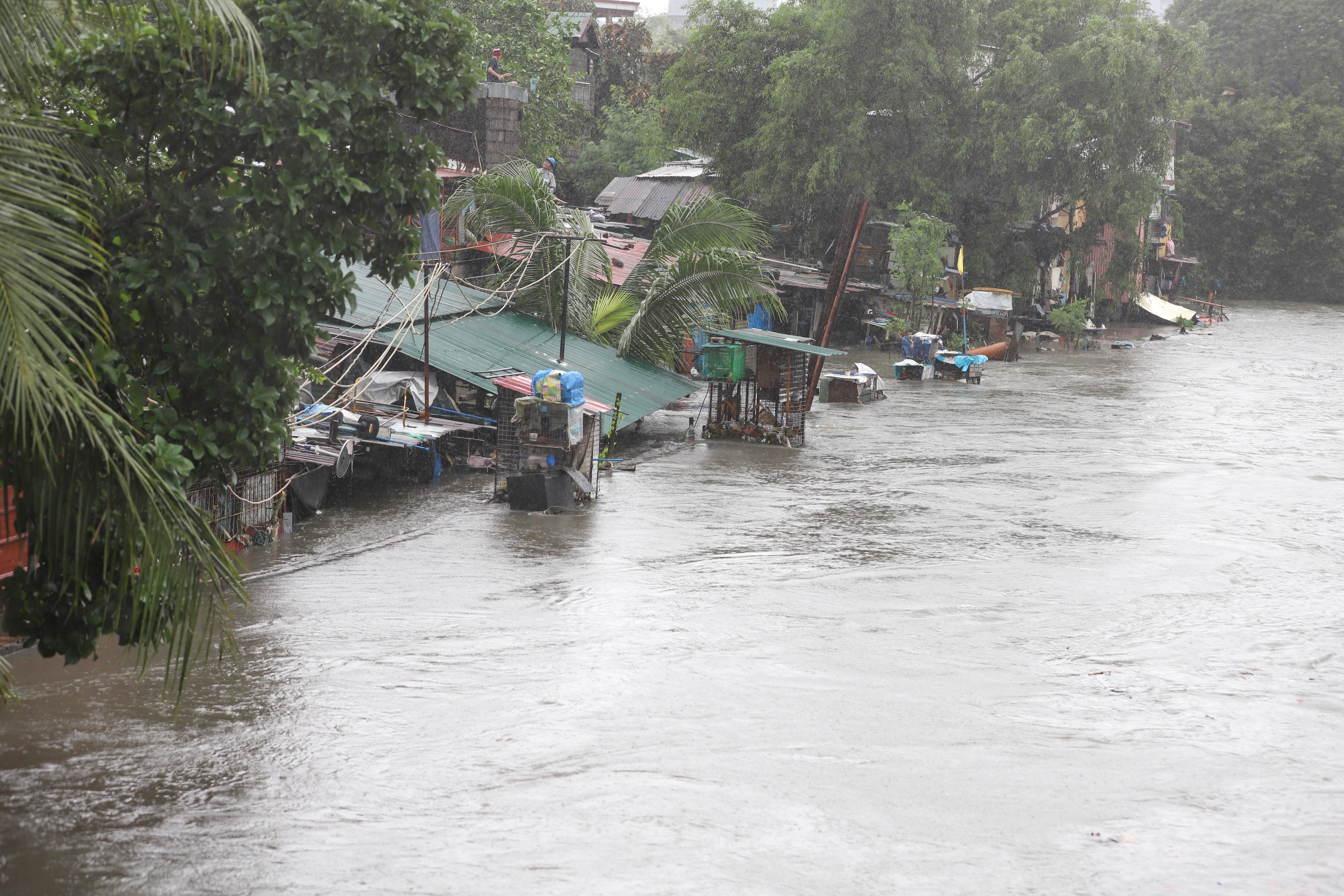
MANILA – National Disaster Risk Reduction and Management Council (NDRRMC) executive director Ricardo Jalad said Friday the 14 deaths recorded during the onslaught of Typhoon Ulysses are still being validated.
“We have monitored 14 dead but none of this is coming from NCR (National Capital Region) because it is still being validated by the DILG (Department of the Interior and Local Government). We have eight injured from Region 5 (Bicol), and 14 missing from Region 2 (Cagayan Valley), Calabarzon, and Region 5,” Jalad said in a televised briefing with members of the Cabinet.
He also said they monitored flooding in 105 areas in the Ilocos region, Cagayan Valley, Central Luzon, Calabarzon, Mimaropa, Bicol, the National Capital Region, and the Cordillera region.
“We also monitored eight landslides, two maritime incidents, and the toppling of posts and trees in 22 areas,” Jalad said.
Before the typhoon struck, he said local government units (LGUs) in “almost the whole of Luzon” evacuated some 64,500 families equivalent to 231,300 persons.
Jalad said a total of 76 emergency alert and warning messages about “Ulysses” were sent out through telecommunications firms Globe and Smart.
“Yesterday (Thursday), we also conducted an emergency meeting here at (the NDRRMC) Operations Center with (the) Search, Rescue, and Retrieval (SRR) Cluster composed of the Armed Forces (AFP), Philippine National Police (PNP), Bureau of Fire Protection (BFP), and Philippine Coast Guard (PCG) in order to mobilize additional resources to be augmented to (ongoing rescue operations by local government units in) the priority areas,” he added.
Jalad said these priority areas are San Mateo in Rizal and Marikina and Pasig City in the NCR.
“And we also conducted (an) aerial assessment in the afternoon yesterday (Thursday) that was led by the chairperson of the NDRRMC, (Defense) Secretary Delfin Lorenzana,” he added.
Meanwhile, an NDRRMC situational report said a total of 181 road sections and 62 road sections in Ilocos, Cagayan Valley, Central Luzon, Calabarzon, Bicol, Eastern Visayas, NCR, and Cordillera region were affected by “flooding, mudflow, landslide, swollen rivers, and soil and rock collapse.”
Of these, 161 road sections and 58 bridges are still impassable.
Affected population
It also said a total of 44,194 families or 170,561 persons in 811 barangays in Cagayan Valley, Calabarzon, Mimaropa, Bicol, NCR, and Cordillera have been affected by the typhoon.
Of the figure, 19,982 families or 74,721 persons are being aided in 825 evacuation centers while 1,558 families or 5,897 individuals are receiving aid outside evacuation centers.
The NDRRMC reported PHP99,342,519 worth of damage in Central Luzon, Calabarzon, and the Cordillera region.
It said as of this time, 12 persons were confirmed dead in Cagayan Valley, Calabarzon, Bicol, and the Cordillera region, along with eight injured and 14 missing.
The discrepancy can be attributed to the fact that the NDRRMC is still consolidating the data on the number of deaths, injured, and missing, it added.
“The NDRRMC is the one in charge of providing the final official count of casualties. The figures (on the) sitrep (situation report) are our running count as of this time,” NDRRMC spokesperson Mark Cashean Timbal said in a message to reporters.
“Ulysses” also caused power outages in 234 cities and municipalities, as well as water interruption in 50 cities and municipalities.
Some 49 cities in Calabarzon and Bicol also experienced problems in communication lines.
Rescue teams deployed
Jalad said 387 national rescue teams from the AFP, PNP, BFP, PCG were deployed to some areas in Central Luzon, Calabarzon, Bicol, and the NCR.
Other uniformed personnel of the AFP, PNP, PCG, and BFP also provided support in the distribution of relief goods and road-clearing operations.
In the same briefing, AFP Chief of Staff, Gen. Gilbert Gapay, reported that the military participated in Pre-Disaster Risk Assessment and emergency planning meetings with local DRRMCs in the affected regions.
As part of the SRR Cluster, the AFP also helped issue advisories and risk communications, as well as with preemptive evacuations, he said.
The AFP mobilized search-and-rescue teams and assets in the affected areas in Bicol, Quezon, and the NCR for search, rescue, and retrieval operations aside from providing assistance to the LGUs and other response clusters of the government.
Gapay said they are doing this while ensuring the safety of their personnel and assets, noting that they don’t want their responders to fall victim to the calamities or disasters they are responding to.
“We remain vigilant and we continuously monitor the possible rise of water and landslides in (the) aftermath of Typhoon Ulysses,” he added.
Meanwhile, Interior Secretary Eduardo Año said his department made all the necessary preparations for “Ulysses” despite the 14 deaths reported.
Año added that this can be attested by the fact that the interior department placed 14 provinces and the entire Metro Manila under alert level “Charlie”, 12 provinces under alert level “Bravo”, and 13 provinces under alert level “Alpha”, totaling 39 provinces, before the typhoon’s landfall.
Alert warning “Alpha’” means the threat level is low while alert warnings “Bravo’’ and “Charlie’’ are raised when there are medium- and high-level threats.